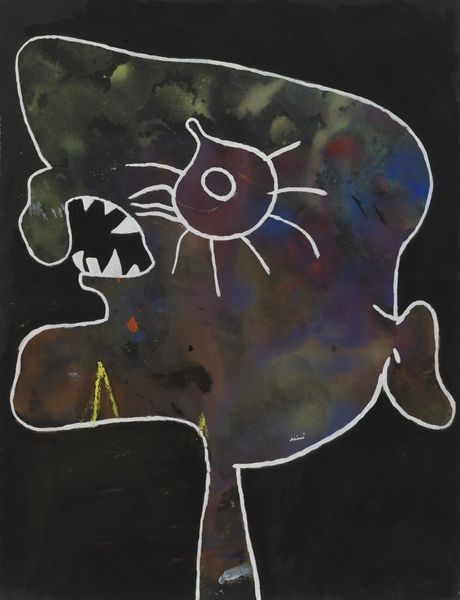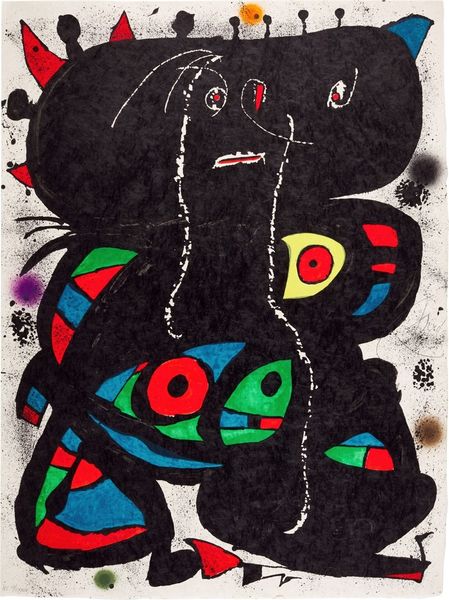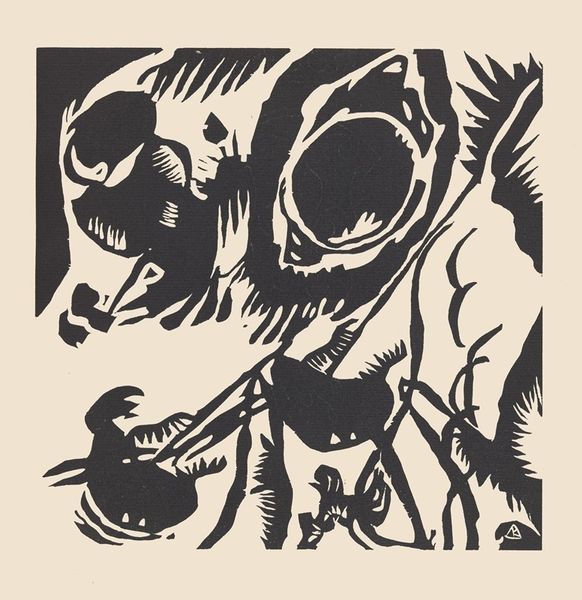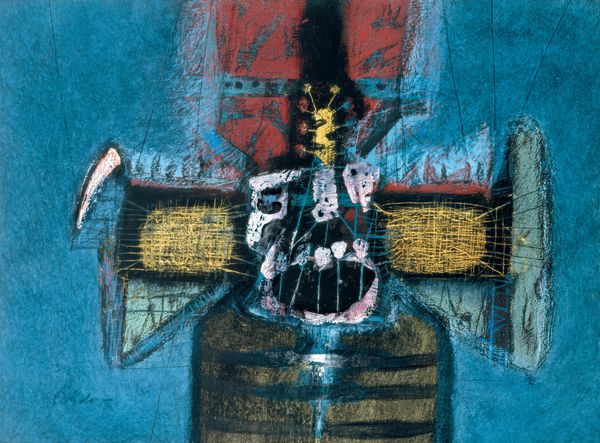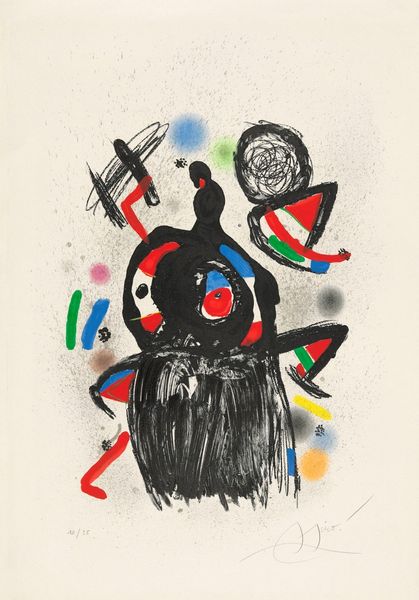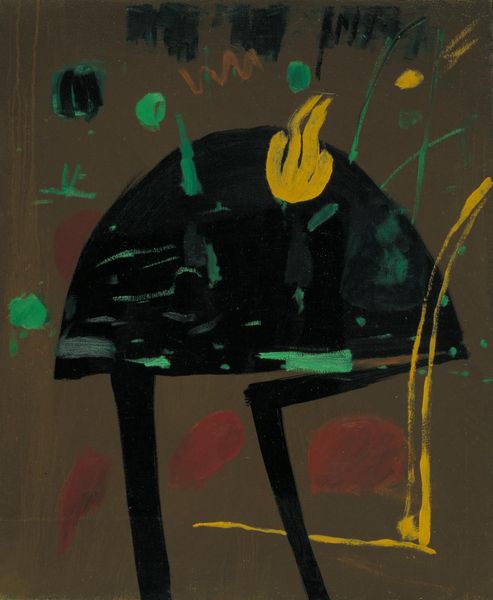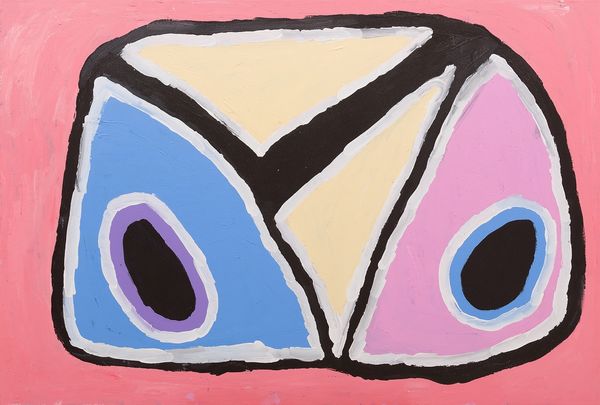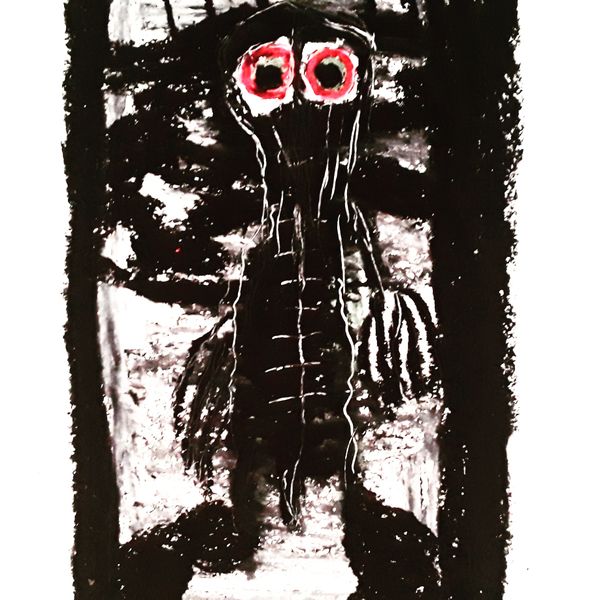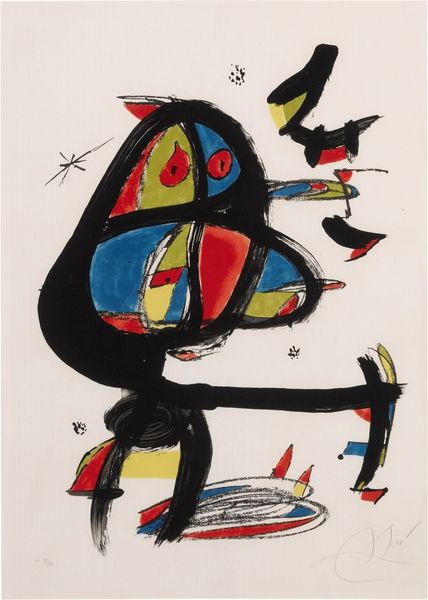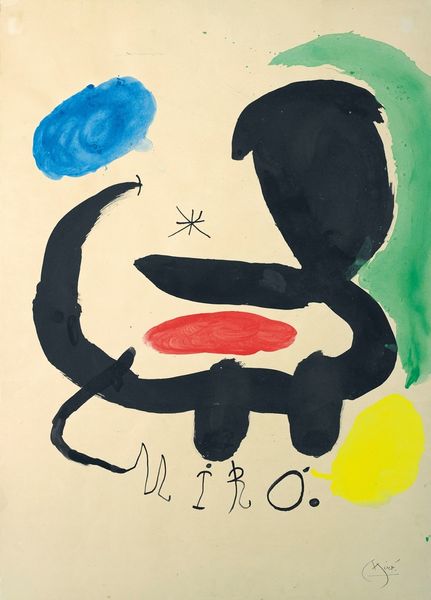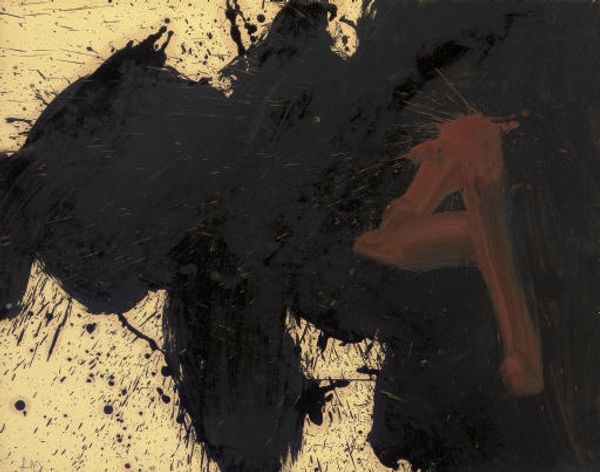
mixed-media, print
#
mixed-media
# print
#
caricature
#
abstract
#
form
#
surrealism
#
modernism
Copyright: Modern Artists: Artvee
Curator: Let's discuss Joan Miró’s “Grand Palais,” a mixed-media print from 1974. I'm immediately struck by its monumentality, despite likely being on paper. The black form looms. Editor: Absolutely. The boldness of that central black shape, juxtaposed against the splattered background, suggests a kind of primal form. Its bulbous shapes and primary colors seem to tap into a very elemental visual language. Curator: Miró often worked across disciplines. Printmaking allowed for reproducibility, a democratizing aspect, offering accessibility to a broader audience. I wonder what kind of printing methods he used to achieve the textures we are looking at. It’s clearly more complex than a simple lithograph. Editor: And the shape itself - that dominates the frame. With its almost comical asymmetry and sparse details. I see eyes, or suggestions of eyes, rendered in red and yellow, along with horn-like appendages. Is this a deity, a grotesque animal, or pure abstracted form? It echoes figures found in many cultures across centuries, doesn’t it? Curator: It’s the suggestion of these recognizable forms – beak, eye – that prevent it from collapsing into complete abstraction. The labor involved in producing these prints is also of interest; each pulled print unique with slightly different textures, slightly varied applications of paint and medium. It becomes, in a way, a serial object with the mark of the artist's hand. Editor: I agree. He evokes a feeling of ancient glyphs and primal beings, but delivered through this lens of mid-century surrealism and abstraction. It speaks to a deep-seated human need to create totems and representations, a universal language seen across millennia. Curator: Examining the social context, it would be intriguing to investigate what the "Grand Palais" represents in Miro’s universe during the 1970s and its commentary in the society. Editor: Yes, and perhaps how it invited a contemporary audience to consider art's roots and the power of simple symbolic expression. Thank you! Curator: A potent thought. Thank you, indeed!
Comments
No comments
Be the first to comment and join the conversation on the ultimate creative platform.
